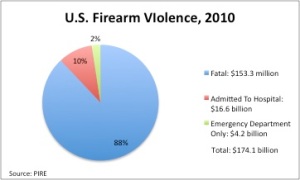Affirmative:
 My father is from Oklahoma, and used to hunt all the time with a rifle he bought when he was in high school. Hunting and owning guns was a part of Oklahoman culture, and my dad was just like all other men his age. But after he married my mom and after I was born, my father took his rifle, dismembered it and stored in different pieces all over the attic. He didn’t want the gun in the house, anywhere near me. Guns are in the homes of millions of Americans, and because of that, there are thousands of accidents a year. The US Center of Disease Control and Prevention conducted a study and found that ”more preschool age children were killed by firearms than police officers in the line of duty” (2007). The same study also found that there were 613 fatal accidents in 2007, 29 of which were children under the age of 9. There were “15,698 non-fatal firearm accidents” and “5,045 accidents that lead to hospitalization”. When the US Center of Disease Control and Prevention starts uncovering statistics like that in the United States, it really starts to worry me. The United States’ job is to discover when the people are in danger, and then help protect them. The Center for Disease Control and Prevention has done the first half of their job, now they need to do the second. The United States is unique in these statistics. An article by Erin Richardson and David Hemenway in the June 2010 edition of Journal of Trauma, Injury, Infection and Critical Care, found that “American children die by guns 11 times more likely as often as children in other high income countries”.
My father is from Oklahoma, and used to hunt all the time with a rifle he bought when he was in high school. Hunting and owning guns was a part of Oklahoman culture, and my dad was just like all other men his age. But after he married my mom and after I was born, my father took his rifle, dismembered it and stored in different pieces all over the attic. He didn’t want the gun in the house, anywhere near me. Guns are in the homes of millions of Americans, and because of that, there are thousands of accidents a year. The US Center of Disease Control and Prevention conducted a study and found that ”more preschool age children were killed by firearms than police officers in the line of duty” (2007). The same study also found that there were 613 fatal accidents in 2007, 29 of which were children under the age of 9. There were “15,698 non-fatal firearm accidents” and “5,045 accidents that lead to hospitalization”. When the US Center of Disease Control and Prevention starts uncovering statistics like that in the United States, it really starts to worry me. The United States’ job is to discover when the people are in danger, and then help protect them. The Center for Disease Control and Prevention has done the first half of their job, now they need to do the second. The United States is unique in these statistics. An article by Erin Richardson and David Hemenway in the June 2010 edition of Journal of Trauma, Injury, Infection and Critical Care, found that “American children die by guns 11 times more likely as often as children in other high income countries”.  This is a problem unique to America, and the American government needs to do something about it. The Brady Law was a law ignited and completed with the help of the Brady campaign, a campaign to help end firearm accidents by increasing firearm safety. The Brady Campaign collected data from across the United States, and found that between 2008 and 2010, “everyday on average, 51 people kill themselves with a firearm, and 45 people are shot or killed in an accident involving a firearm”, that is that largest increase from 2007 (2008-2010, Brady Campaign). Firearms are a dangerous thing to have in the house, and they lead to so many accidents in the home. That is the single reason my dad decided to get rid of his gun after my sister and I came around. He did not want to even imagine what would happen if we were playing around in the basement, or his bedroom one day and came across the gun. The biggest argument that is seen in response to banning guns in the home is that guns need to be used in self-defense. A person has a right to defend their home and their family. But Arthur Kellerman, in his 1998 study “Injuries and Deaths due to Firearms in the Home”, found that having a gun in a home makes it “22 times more likely to be used to kill or injure in a domestic homicide, suicide, or unintentional shooting that to be used in self defense”. Firearms are a danger to have in the house, especially when you have children in the house. This is a major flaw in the American culture and needs to be corrected.
This is a problem unique to America, and the American government needs to do something about it. The Brady Law was a law ignited and completed with the help of the Brady campaign, a campaign to help end firearm accidents by increasing firearm safety. The Brady Campaign collected data from across the United States, and found that between 2008 and 2010, “everyday on average, 51 people kill themselves with a firearm, and 45 people are shot or killed in an accident involving a firearm”, that is that largest increase from 2007 (2008-2010, Brady Campaign). Firearms are a dangerous thing to have in the house, and they lead to so many accidents in the home. That is the single reason my dad decided to get rid of his gun after my sister and I came around. He did not want to even imagine what would happen if we were playing around in the basement, or his bedroom one day and came across the gun. The biggest argument that is seen in response to banning guns in the home is that guns need to be used in self-defense. A person has a right to defend their home and their family. But Arthur Kellerman, in his 1998 study “Injuries and Deaths due to Firearms in the Home”, found that having a gun in a home makes it “22 times more likely to be used to kill or injure in a domestic homicide, suicide, or unintentional shooting that to be used in self defense”. Firearms are a danger to have in the house, especially when you have children in the house. This is a major flaw in the American culture and needs to be corrected.
Refutation:
We stand firmly against guns. This book discourages a gun ban in the United States, but they point out several points that do not fully support their claim of allowing people the right to possess firearms. Halbrook stated that it is common knowledge that handguns do not end up granted to anyone other than the rich and the well-connected  (5). This is an extreme point because people can pretty easily get their hands on guns; they do not have to be well-connected and rich. This point could have some truth to it, but many people can get their hands on handguns. Halbrook used overstatement to try and justify his point because what he stated was not common knowledge. Halbrook also brought up misinterpreted evidence by bringing up the fourteenth amendment. The fourteenth amendment states, No State shall make or enforce any law, which shall abridge the privileges or immunities of citizens of the United States; nor shall any State deprive any person of life, liberty, or property, without due process of law. Halbrook continues writes that the fourteenth amendment states that all people have the right to own handguns, but the problem with taking away people’s guns is because of due process (197). He made several references to the fourteenth amendment throughout the book about how people are entitled to possess guns, but that is not necessarily true. The issue with the fourteenth amendment and gun control is that the federal government should not be allowed to take away property and in this case someone’s guns. Halbrook’s main point throughout the book was that people should have the right to own guns because of the second amendment. The second amendment does state clearly that people have the right to bear arms, but he clarifies people as all
(5). This is an extreme point because people can pretty easily get their hands on guns; they do not have to be well-connected and rich. This point could have some truth to it, but many people can get their hands on handguns. Halbrook used overstatement to try and justify his point because what he stated was not common knowledge. Halbrook also brought up misinterpreted evidence by bringing up the fourteenth amendment. The fourteenth amendment states, No State shall make or enforce any law, which shall abridge the privileges or immunities of citizens of the United States; nor shall any State deprive any person of life, liberty, or property, without due process of law. Halbrook continues writes that the fourteenth amendment states that all people have the right to own handguns, but the problem with taking away people’s guns is because of due process (197). He made several references to the fourteenth amendment throughout the book about how people are entitled to possess guns, but that is not necessarily true. The issue with the fourteenth amendment and gun control is that the federal government should not be allowed to take away property and in this case someone’s guns. Halbrook’s main point throughout the book was that people should have the right to own guns because of the second amendment. The second amendment does state clearly that people have the right to bear arms, but he clarifies people as all  people even though the use of the term people does not have a particular context. The United States owning a militia can clarify as people as well, but he totally overlooks this point. He tends to overlook opposing viewpoints such as how other people may interpret the second amendment. This book explains a lot about the history of how the constitution was crafted and how guns have been allowed through history. There are a lot of problems with how he describes how guns have come to be allowed and should remain accepted in people’s households. Halbrook argues that people should have the right to possess guns; however, he assumes what a lot of the Founding Fathers believed on the issue despite how different the times were then and now. Overall the book was published in 1984 and it is out of date because it fails to bring up several mass killings over the last decade as well as adjustments to public policy and current laws that have been changed completely or altered. This is a problem because public safety is the whole point to gun control, and when he tries validating his points it does not point out the current problems that exist today.
people even though the use of the term people does not have a particular context. The United States owning a militia can clarify as people as well, but he totally overlooks this point. He tends to overlook opposing viewpoints such as how other people may interpret the second amendment. This book explains a lot about the history of how the constitution was crafted and how guns have been allowed through history. There are a lot of problems with how he describes how guns have come to be allowed and should remain accepted in people’s households. Halbrook argues that people should have the right to possess guns; however, he assumes what a lot of the Founding Fathers believed on the issue despite how different the times were then and now. Overall the book was published in 1984 and it is out of date because it fails to bring up several mass killings over the last decade as well as adjustments to public policy and current laws that have been changed completely or altered. This is a problem because public safety is the whole point to gun control, and when he tries validating his points it does not point out the current problems that exist today.
Halbrook, Stephen P. That Every Man Be Armed: The Evolution of a Constitutional Right. Albuquerque: University of New Mexico, 1984. Print.
Citation:
Citations, all of these connect because they touch on firearm accidents and fatalities involving children:
Homicide, Suicide, and Unintentional Firearm Fatality: Comparing the United States With Other High-Income Countries, by Erin G Richardson and David Hemenway
Published in 2010 in the Journal of Trauma, Injury, Infection, and Critical Care
http://www.ncbi.nlm.nih.gov/pubmed/20571454
The articles main argument is that America, in relation to other high income countries have a higher rate of violent deaths. The United States in the outlier when looking at other high-income countries when it comes to overall homicide rate. It compare the United States to other high-income countries, like England , France, Germany etc., by the number of homicides, suicides and violent deaths. This is very useful to our topic of why guns should be banned, because it proves that while violent deaths are inevitable, the United States stands out and has a serious issue that needs  to be addressed. The gun culture in America is too lenient, and kids are getting hurt because of it. The exact quote that will be of the most use to us is, “American children die by guns 11 times as often as children in other high income countries.” That statistic speaks for itself, Americans need to consider the value of a life, and if they really want to chance their child’s life.
to be addressed. The gun culture in America is too lenient, and kids are getting hurt because of it. The exact quote that will be of the most use to us is, “American children die by guns 11 times as often as children in other high income countries.” That statistic speaks for itself, Americans need to consider the value of a life, and if they really want to chance their child’s life.
Casualty Status, a report done by the U.S. Department of Defense in 2012
http://siadapp.dmdc.osd.mil/personnel/CASUALTY/castop.htm
The report was done on the number casualties in the United States across the board. Statistics from all over the US of deaths, caused by a variety of things, ranging from the early 1900s to now. The most staggering and shocking statistics though, are the ones involving children. The report found that the amount of children that America has lost  to gunfire since 1979, is “three times as many US military deaths during the Vietnam War”, and “23 times the number of US military deaths in Iraq and Afghanistan” (2012). The total number of children that have lost their lives since 1979 is 116,385, that could fill Fenway Park in Boston three times over, it could also fill 4,655 public schools with class sizes of around 25 kids. Putting all of these statistics into perspective create an even more profound affect and really stress the importance of a gun ban in the United States.
to gunfire since 1979, is “three times as many US military deaths during the Vietnam War”, and “23 times the number of US military deaths in Iraq and Afghanistan” (2012). The total number of children that have lost their lives since 1979 is 116,385, that could fill Fenway Park in Boston three times over, it could also fill 4,655 public schools with class sizes of around 25 kids. Putting all of these statistics into perspective create an even more profound affect and really stress the importance of a gun ban in the United States.
For Lives and Liberty: Banning Assault Weapons in America, article by the Harvard Political Review
http://www.iop.harvard.edu/lives-and-liberty-banning-assault-weapons-america
This article picks a specific battle of our blog topic, banning assault weapons, and is written by Jake Matthews at the Harvard Political Review. In the piece, Matthews discusses and subsequently solidifies an important aspect of our argument. By referencing tragedies such as the Aurora, Ft. Hood, and Tuscon shootings, Matthews supplements emotional appeal with selected statistics. Most notably, Matthews states that, as of a 2005 Gallup poll, of the top three reasons to own a gun (protection, target 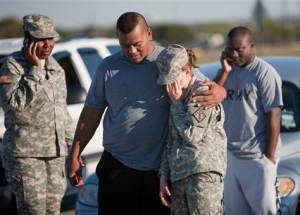 shooting, and hunting) not one requires an assault weapon (2). He also opens up a discussion regarding the Second Amendment, saying that the outdated idea of a statewide militia shows the text’s age. This article could serve as a great resource with which to construct our argument. The limited practicality of assault weapons and overwhelming potential for destruction builds a solid foundation for the effort to ban guns. Within the text, Matthews backs up his piece with useful statistics from sources such as the Bureau of Alcohol, Tobacco, Firearms, and Explosives, the Center for Disease Control and Prevention, and a Gallup poll.
shooting, and hunting) not one requires an assault weapon (2). He also opens up a discussion regarding the Second Amendment, saying that the outdated idea of a statewide militia shows the text’s age. This article could serve as a great resource with which to construct our argument. The limited practicality of assault weapons and overwhelming potential for destruction builds a solid foundation for the effort to ban guns. Within the text, Matthews backs up his piece with useful statistics from sources such as the Bureau of Alcohol, Tobacco, Firearms, and Explosives, the Center for Disease Control and Prevention, and a Gallup poll.
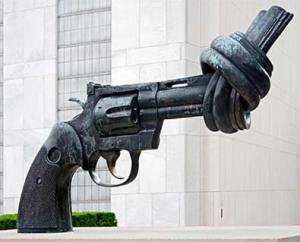 This article is not too useful within the debate of gun control because its argument is not strong enough. Stating that we should not control guns because it would be hard to take the guns away or stop illegal sales is no actual argument about trying or taking steps in the right direction. In truth these steps would help prevent gun issues and are thus better for the American people.
This article is not too useful within the debate of gun control because its argument is not strong enough. Stating that we should not control guns because it would be hard to take the guns away or stop illegal sales is no actual argument about trying or taking steps in the right direction. In truth these steps would help prevent gun issues and are thus better for the American people. This is an article addressing the Democrat’s push for gun control following the mass shooting at the Navy Yard on September 16th, 2013. The article discusses how while the recent shooting should provide support to gun control backers, the issue still may not pull enough votes. This is due to the fact that Democrats will be facing a tough election in the 2014 elections and large groups, such as the National Rifle Association (NRA), will strongly oppose those who come out in favor of gun control.
This is an article addressing the Democrat’s push for gun control following the mass shooting at the Navy Yard on September 16th, 2013. The article discusses how while the recent shooting should provide support to gun control backers, the issue still may not pull enough votes. This is due to the fact that Democrats will be facing a tough election in the 2014 elections and large groups, such as the National Rifle Association (NRA), will strongly oppose those who come out in favor of gun control.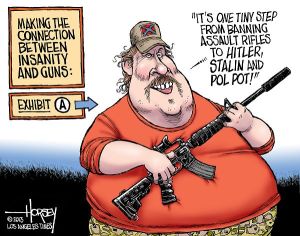


 It is important to point out that firearms lead to countless accidental injuries and homicides. In a New York Times review of hundreds of child firearm deaths, they found that accidental shootings occurred roughly TWICE as often as the records indicate, because of idiosyncrasies in how such deaths are classified by the authorities (Luo and McIntire, 2013). When people are allowed to possess guns it ultimately leads to accidents. The exact number varies because many accidents due to firearms are classified as something other than an accidental shooting. These shootings are more frequent then people think and can leave a whole family distraught. Look at Joshua Skorczewski, he accidently shot his 12-year old sister when he lost control of a shotgun that was lying around the house. In 2011 alone, there were 847 unintentional nonfatal firearm injuries among children 14 and under (Luo and McIntire, 2013). Does it matter who is responsible? One way or another a young girl is dead.
It is important to point out that firearms lead to countless accidental injuries and homicides. In a New York Times review of hundreds of child firearm deaths, they found that accidental shootings occurred roughly TWICE as often as the records indicate, because of idiosyncrasies in how such deaths are classified by the authorities (Luo and McIntire, 2013). When people are allowed to possess guns it ultimately leads to accidents. The exact number varies because many accidents due to firearms are classified as something other than an accidental shooting. These shootings are more frequent then people think and can leave a whole family distraught. Look at Joshua Skorczewski, he accidently shot his 12-year old sister when he lost control of a shotgun that was lying around the house. In 2011 alone, there were 847 unintentional nonfatal firearm injuries among children 14 and under (Luo and McIntire, 2013). Does it matter who is responsible? One way or another a young girl is dead.
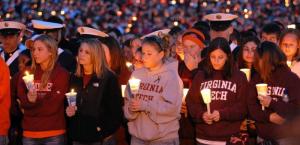

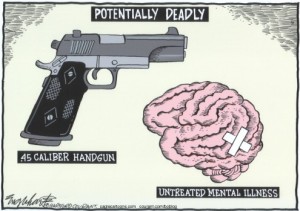
 Examines several historical and modern components of the use of guns in self-defense and other potential violent situations. As Richard North Patterson, an American novelist and active member of pro-peace and anti-violence groups, states, “”This lucid and penetrating study is essential reading for anyone who wishes to understand the tragedy of gun violence in America and-even more important-what we can do to stop it. David Hemenway cuts through the cant and rhetoric in a way that no fair-minded person can dismiss, and no sane society can afford to ignore” (Project Muse).
Examines several historical and modern components of the use of guns in self-defense and other potential violent situations. As Richard North Patterson, an American novelist and active member of pro-peace and anti-violence groups, states, “”This lucid and penetrating study is essential reading for anyone who wishes to understand the tragedy of gun violence in America and-even more important-what we can do to stop it. David Hemenway cuts through the cant and rhetoric in a way that no fair-minded person can dismiss, and no sane society can afford to ignore” (Project Muse).


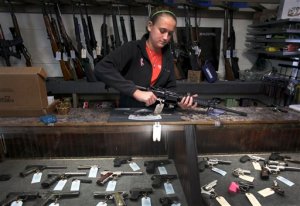 In 2006, author, Professor of Health Policy at the Harvard School of Public Health, and Director of the Harvard Injury Control Research Center David Hemenway wrote a book entitled “Private Guns, Public Health” in which he breaks down various components involving the gun violence in America. The book provides a number of sources of research involving the effects of firearms on public health. While the book handles and affirms multiple reasons that benefit our argument, for now we will focus on the issue of self-defense for the sake of clarity and thoroughness.
In 2006, author, Professor of Health Policy at the Harvard School of Public Health, and Director of the Harvard Injury Control Research Center David Hemenway wrote a book entitled “Private Guns, Public Health” in which he breaks down various components involving the gun violence in America. The book provides a number of sources of research involving the effects of firearms on public health. While the book handles and affirms multiple reasons that benefit our argument, for now we will focus on the issue of self-defense for the sake of clarity and thoroughness.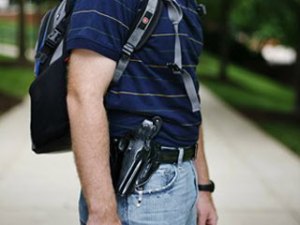
 “Guns should be put into our schools”. This is the idea supported by an op-ed article on CNN.com. To me this seems like an awful idea, with many different negative reproductions. The idea that this article supports is that if teachers are given guns to carry around the school, then it will thus create a safer environment for the students and will help prevent school shootings. This idea is not true however, as the issue is more complex than the article makes it out to be. Throwing more guns into the problem is an irrational decision that may even make the problem worse.
“Guns should be put into our schools”. This is the idea supported by an op-ed article on CNN.com. To me this seems like an awful idea, with many different negative reproductions. The idea that this article supports is that if teachers are given guns to carry around the school, then it will thus create a safer environment for the students and will help prevent school shootings. This idea is not true however, as the issue is more complex than the article makes it out to be. Throwing more guns into the problem is an irrational decision that may even make the problem worse.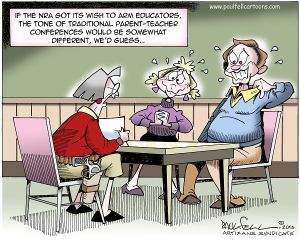 One issue with giving teachers guns to prevent problems is that now there are guns within the school to begin with. This makes the schools more dangerous then they usually are, only to help against an unlikely shooting. There would have to be measures in place to prevent students from getting their hands on the gun at all costs, and even at that accidents are bound to happen. Also, one would have to make sure that the teachers would be properly trained to handle a firearm before this solution could take place. This leads to several other questions that could result in even more problems within the school. For instance, how much training is enough training? How much training is needed so that in the event of an attack a teacher will execute their job without messing up and making the problem even worse or harming an innocent? Who would train these teachers and who would pay for it, especially in the case of a poorer school? This does not even count the questions that arise concerning which teacher would be selected to carry the gun around school and whether or not that teacher will handle the situation correctly during the event of a shooting. A teacher’s job should be the education of children, not taking out an armed shooter.
One issue with giving teachers guns to prevent problems is that now there are guns within the school to begin with. This makes the schools more dangerous then they usually are, only to help against an unlikely shooting. There would have to be measures in place to prevent students from getting their hands on the gun at all costs, and even at that accidents are bound to happen. Also, one would have to make sure that the teachers would be properly trained to handle a firearm before this solution could take place. This leads to several other questions that could result in even more problems within the school. For instance, how much training is enough training? How much training is needed so that in the event of an attack a teacher will execute their job without messing up and making the problem even worse or harming an innocent? Who would train these teachers and who would pay for it, especially in the case of a poorer school? This does not even count the questions that arise concerning which teacher would be selected to carry the gun around school and whether or not that teacher will handle the situation correctly during the event of a shooting. A teacher’s job should be the education of children, not taking out an armed shooter.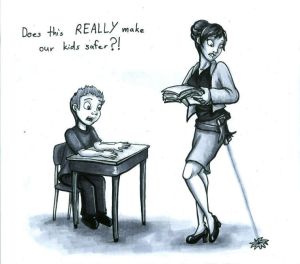 The problem with giving a teacher gun in a school is that it leads too many open questions that could make schools a less safe to be and may not even be effective in the case of a shooting. The argument addressed in this article simply tries to turn a blind eye on the real issue at hand, gun control. It attempts to solve a gun problem by throwing more guns at the situation. Only by eliminating the shooters in the first place can we make our schools a safer place for children to be.
The problem with giving a teacher gun in a school is that it leads too many open questions that could make schools a less safe to be and may not even be effective in the case of a shooting. The argument addressed in this article simply tries to turn a blind eye on the real issue at hand, gun control. It attempts to solve a gun problem by throwing more guns at the situation. Only by eliminating the shooters in the first place can we make our schools a safer place for children to be. My father is from Oklahoma, and used to hunt all the time with a rifle he bought when he was in high school. Hunting and owning guns was a part of Oklahoman culture, and my dad was just like all other men his age. But after he married my mom and after I was born, my father took his rifle, dismembered it and stored in different pieces all over the attic. He didn’t want the gun in the house, anywhere near me. Guns are in the homes of millions of Americans, and because of that, there are thousands of accidents a year. The US Center of Disease Control and Prevention conducted a study and found that ”more preschool age children were killed by firearms than police officers in the line of duty” (2007). The same study also found that there were 613 fatal accidents in 2007, 29 of which were children under the age of 9. There were “15,698 non-fatal firearm accidents” and “5,045 accidents that lead to hospitalization”. When the US Center of Disease Control and Prevention starts uncovering statistics like that in the United States, it really starts to worry me. The United States’ job is to discover when the people are in danger, and then help protect them. The Center for Disease Control and Prevention has done the first half of their job, now they need to do the second. The United States is unique in these statistics. An article by Erin Richardson and David Hemenway in the June 2010 edition of Journal of Trauma, Injury, Infection and Critical Care, found that “American children die by guns 11 times more likely as often as children in other high income countries”.
My father is from Oklahoma, and used to hunt all the time with a rifle he bought when he was in high school. Hunting and owning guns was a part of Oklahoman culture, and my dad was just like all other men his age. But after he married my mom and after I was born, my father took his rifle, dismembered it and stored in different pieces all over the attic. He didn’t want the gun in the house, anywhere near me. Guns are in the homes of millions of Americans, and because of that, there are thousands of accidents a year. The US Center of Disease Control and Prevention conducted a study and found that ”more preschool age children were killed by firearms than police officers in the line of duty” (2007). The same study also found that there were 613 fatal accidents in 2007, 29 of which were children under the age of 9. There were “15,698 non-fatal firearm accidents” and “5,045 accidents that lead to hospitalization”. When the US Center of Disease Control and Prevention starts uncovering statistics like that in the United States, it really starts to worry me. The United States’ job is to discover when the people are in danger, and then help protect them. The Center for Disease Control and Prevention has done the first half of their job, now they need to do the second. The United States is unique in these statistics. An article by Erin Richardson and David Hemenway in the June 2010 edition of Journal of Trauma, Injury, Infection and Critical Care, found that “American children die by guns 11 times more likely as often as children in other high income countries”. 


 to be addressed. The gun culture in America is too lenient, and kids are getting hurt because of it. The exact quote that will be of the most use to us is, “American children die by guns 11 times as often as children in other high income countries.” That statistic speaks for itself, Americans need to consider the value of a life, and if they really want to chance their child’s life.
to be addressed. The gun culture in America is too lenient, and kids are getting hurt because of it. The exact quote that will be of the most use to us is, “American children die by guns 11 times as often as children in other high income countries.” That statistic speaks for itself, Americans need to consider the value of a life, and if they really want to chance their child’s life.

